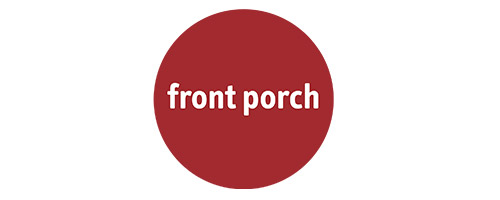Hospice on your bucket list: More insights and inspirations
A geriatric nurse reveals additional stories that inspire her, along with insights and information on how to ensure quality of life at end of life
by Kimberly Baumgarten, RN, FCN, with Mary E. Sanders, PhD, CDE, ACSM-RCEP, FACSM
As a geriatric nurse, I see the last season of life as richly beautiful. My passion is to walk alongside others during their toughest times and to teach other professionals not only how to do this too, but also to walk in a way that is a healing balm for all involved. To show that healing can happen to the body, but even if that fails, healing can be brought to the spirits of our residents and their families.
I invite you to walk with me as we discuss hospice and end-of-life crossroads. The stories that follow have inspired me. I hope they encourage you, along with your families and your residents or members, to undertake these important conversations.
Let’s begin this article with a review of hospice care and what it is.
What really matters
Many people think of death when they hear the word hospice. Yet, for me, hospice is not about death. It is about quality of life and being the predominant voice in your own care. Hospice puts the individual at the center of decision-making and supports quality of life for the whole person, just as active aging focuses on individuals taking charge of their experiences, engaging fully with aging, and making choices that determine life’s direction and quality. For me, active aging includes end-of-life care, starting with questions about what really matters—“What do I really want and need?”
The criteria for hospice care is that you must have some disease process that could take your life within six months. The guidelines state that you are suffering from a disease or condition that cannot be cured; they do not say that you have to be diagnosed with something for which you should not receive care. Palliative care differs in a couple of ways. With palliative care, end of life is anticipated within one year, so longer-term treatment is expected during the disease process. Palliative care can also combine curative and comfort care—a key characteristic.
In facing end-of-life experiences, we each may plan the memory we want to leave with our loved ones and support others in planning their own. We can also learn from one another about how to participate in these decisions for the people in our lives.
When ‘enough is enough’
Last year a family member was diagnosed with stage 4 lymphoma. She was in her 60s, so of course she wanted to fight for her life and we wanted to support her in any way possible. But things only got worse. The cancer was clearly winning, as she spent seven weeks in the hospital in intensive care. We had openly talked about her wishes and about deciding when it would be time to stop treatment. When that time came, we were all blessed to have a physician who was an incredible combination of compassion and intelligence.
In one of our daily conversations with this doctor, we finally asked the question, “Are we at the point of crazy medicine?” I use that phrase “crazy medicine” a lot. For me, it means reaching a point where we continue looking for a cure when clearly none is present, and where we continue to ask the person to endure treatments because no one will bring up the issue that “enough is enough” or it is time to face “end of life.” The doctor agreed that, indeed, we had sadly arrived at this point.
It’s difficult to talk about choices in end-of-life matters when you are in crisis, your family is beyond exhausted and panic is palpable. I chose to have these conversations with my family ahead of time, and I believe that some of our toughest moments were easier because we weren’t guessing. We donated organs from one family member and not another because they had clearly stated their preferences. We had family stay at home and others stay in the hospital because that’s what they asked us to do.
Death is the given in life for all of us. When it becomes clear medically that we are not doing anything but prolonging life, we have the comfort of knowing what to do as a family. Our end of life (plan B) has already been spoken and shared.
The experimental patient
Sometimes people share what they want at end-of-life crossroads, but they have trouble being heard. That’s when they especially need support for their wishes.
Mr. G was 98 years old, looked 68, and swam miles everyday—he was what we all dream 98 years old can look like. Then, he developed a rare autoimmune disease that caused horrific growths on his face. Everyday I would scrub his face, removing what he called his “leprosy mask,” but this horribly painful procedure made things better for just a day and then we would start back at square one. This went on for a few months. The former marine cried, stopped himself from suicide only because of his faith, and was clear he had had enough. The pain took all of his energy. He had no quality of life.
The family asked me to go with them to the next doctor’s appointment, as Mr. G was clear about what he wanted but felt he wasn’t being heard. The doctor was clear that he thought the case was interesting. Mr. G had a rare disease that few doctors actually got to see. The physician had discussed the case with his colleagues at the nearest university hospital, and they too were excited to see the case. There was an experimental medicine, he said. No, it had never worked; no, it wasn’t approved for this situation—but why not?
Clearly, the rare disease held more interest than the patient for this doctor. So I talked to him privately. He told me how, as a medical professional, rare is always interesting. How the case would be an amazing case study. I agreed. I had even had some of my student nurses work with me specifically on the case. But then it was time to be Mr. G’s advocate.
I shared with the doctor that I understood his perspective, but wondered if he had stopped to see the human who happened to have this disease. If Mr. G were 58 years old, experimental treatment might make sense. But did we really want to ask this 98-year-old man to drive two hours each way to the hospital to undergo an unproven treatment with little hope of success? Was that what the patient needed?
Through much discussion, the physician finally moved his focus from the disease to the man. He asked Mr. G, “What do you want?” I believed Mr. G needed pain control, time to get his affairs in order and, most importantly, time to be with his wife and daughters. He needed to feel in control and to have a voice. Answering the doctor’s question, Mr. G said that he wanted pain control; he wanted to be remembered as a strong man; and he wanted to be at home. So that’s where we moved his care.
Hospice was ordered, and we cared for Mr. G for two days. He spent his final night with his family, just as he had wanted. If he had said yes to the research facility, he would have died in a hospital, far from his family and exhausted from traveling and treatment.

Medical teamwork
Starting a conversation about end-of-life issues with a medical team requires a level of understanding about their professional skills. It is worth noting here that physicians make up the number one profession seeking hospice care for their personal plans. They understand that when they suffer certain diagnoses, treatment not only will not solve the problem, but it may even make their quality of life or the disease worse.
Yet, as physicians and nurses, we are trained to cure at all cost, and we are always thinking in terms of cure at a certain level. To some degree, medical practitioners have to possess some arrogance, or at least immense self-assurance, in order to do what is professionally required. We need to make the right (but often very difficult) decisions. And these decisions may cause pain in the short term. The essence of our training, however, encompasses knowing that a cure is on the other side of the treatment. Occasionally, as was the case with Mr. G, we need to be reminded when “enough is enough.”
Discussions about your wishes should be part of establishing a rapport between your medical team and your family long before a crisis. Begin to talk about what you see as quality-of-life characteristics that you envision for yourself. People who you invite into the conversation need to understand your desires and then move forward with support. You don’t want to revisit this conversation regularly.
It’s often easy to answer the big questions about ventilators, tube feeding and so on, but what about the “little things”? For example:
- Do you want to be at home, or would you feel better in a hospital?
- Do you want spiritual support, music and caretakers in your home?
- Do you need your pet with you?
These seemingly small things are the very things that give our lives quality. How do we incorporate them into our life plans even if frailty occurs?
For people in the 55-to-80-year age range, we must begin to talk about what active aging looks like if frailty comes. Each person must be given the chance to make decisions about what they need and want when it comes to end of life. As professionals who work with older adults and as individuals, we have the opportunity to learn about the issues and to help educate others about them as well. Everyone deserves the opportunity to make informed, intelligent decisions about end-of-life experiences. By better understanding and planning for these crossroads, and supporting others in doing the same, we can help ensure quality of life until end of life for ourselves, our family members and our residents or members.
 Kimberly Baumgarten, RN, FCN. Image courtesy of O’Connor Woods
Kimberly Baumgarten, RN, FCN. Image courtesy of O’Connor Woods
Kimberly Baumgarten is the Health Clinic Manager & Clinical Services Coordinator at O’Connor Woods, a life-plan community in Stockton, California. Baumgarten’s goal is to help residents reach and maintain optimal physical, mental and spiritual health. She assesses new residents for admission to the O’Connor Woods community, is called upon for emergencies, and acts as a medical liaison and advocate for both residents and their families. In her role as Health Clinic Manager, she provides first aid, organizes flu vaccine clinics, health fairs and more. Helping others live their best possible life is her passion. For more information, visit www.oconnorwoods.org.
 Mary E. Sanders, PhD, CDE, ACSM-RCEP, FACSM. Image courtesy of WaterFit
Mary E. Sanders, PhD, CDE, ACSM-RCEP, FACSM. Image courtesy of WaterFit
Mary E. Sanders is an Adjunct Professor in the University of Nevada, Reno School of Medicine and Community Health Sciences, School of Public Health. A clinical exercise physiologist and Certified Diabetes Educator®, Sanders also directs WaterFit ®/Golden Waves®. She serves on the International Council on Active Aging Advisory Board and as Associate Editor for the Journal on Active Aging®. She is author of the publication’s longtime “Splash!” column.
Resources
Internet
National Hospice and Palliative Care Organization
https://www.nhpco.org/about/hospice-care
O’Connor Woods
https://www.oconnorwoods.org
Print
Gawande, A., MD. (2014). Being Mortal: Medicine and What Happens in the End. New York, NY: Metropolitan Books, an imprint of Henry Holt & Co.
Wyatt, K. M., MD. (2011). What Really Matters: 7 Lessons for Living from the Stories of the Dying. New York, NY: SelectBooks, Inc.
Note: This information is not intended to replace a one-on-one relationship with a qualified healthcare professional and is not intended as medical advice. It is intended as a sharing of knowledge and information from research. The view expressed here are not necessarily those of the ICAA, we encourage you to make your own health and business decisions based upon your research and in partnership with a qualified professional.
Share

































